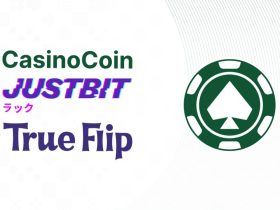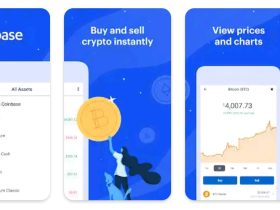
We have seen many events in the short history of cryptocurrency. From a sure thing for the future to a scourge of society, cryptocurrency has had a variety of reactions. With only ten years of existence, we have seen both positive and negative sides of the coin. What will the future of cryptocurrency look like? We will learn about the technology behind Blockchain technology, Public-key cryptography, Bit gold, and Litecoin.
Blockchain technology
Blockchain technology and cryptocurrency are often confused, but they are not synonymous. Blockchain is a technology that can support various industries, including banking, real estate, and fitness tracking. Bitcoin is a form of cryptocurrency that relies on Blockchain technology. Blockchains are networks of interconnected devices. Each node can be used to transact in other networks. In fact, blockchains can be used to manage and distribute vaccines. In addition, Blockchains are used in a variety of other ways, including payment systems and trustless environments.
The history of blockchain and cryptocurrency can be traced to the early 1990s. Computer scientist David Chaum invented a system that embodies many of the elements of blockchain. He is credited with creating digital cash and founded the DigiCash corporation in 1989. He patented his system in 1991. Today, many people use blockchains to transfer funds. In fact, there are more than 3 trillion bitcoins in use today. Its popularity is based on its potential for interorganizational cooperation.
Public-key cryptography
The history of public-key cryptography goes back to the 1970s, when Martin Hellman and Whitfield Diffie proposed the concept of public-key cryptography. The idea combines two keys to protect the data, rather than one single secret key used by both parties. This system enables the simple, elegant implementation of digital signatures. It was later adopted for use in the internet. In this article, we’ll take a closer look at the history of public-key cryptography and its applications.
Public-key cryptography works on the principle that public-key encryption relies on two sets of keys: a private key and a public key. Public keys are used to encrypt and decrypt content, while private keys are used to create authentic signatures. This process ensures that only the intended recipient has access to the content. The system is widely used in the cloud and has become the standard for secure connection and data transfer.
Bit gold
Blockchain technology is revolutionizing the way people buy, sell, and transfer goods and services. The first digital currencies, bitcoin, and bit gold were developed using proof of work schemes. Unlike fiat currencies, bit gold had to be created and transferred only once to have value. As such, they are not fungible based on length. But, the new technology does have a few benefits. For one, they can be used as a means of establishing trust because their estimated values can be independently verified and automated.
However, Szabo didn’t see these automated markets as appropriate proof-of-work for Bit Gold. A valid proof-of-work function for Bit Gold should be quantifiable in order to enable the market to price the currency. One-way hashing functions are prohibitively difficult to perform. Instead, Szabo proposes using a benchmark function, a function whose difficulty is precisely quantifiable in abstract terms.
Litecoin
Litecoin began as a software project on October 13, 2011. It was created by computer scientist Charlie Lee and published as open-source software. While Bitcoin grew in popularity, Litecoin was criticized for being a near-exact copy of the cryptocurrency. Despite this criticism, Litecoin’s creation proved that new cryptocurrencies are now easy to create. Charlie Lee’s work on the project has been instrumental to the success of the cryptocurrency.
In the beginning, the currency’s price fluctuated quite a bit. At its highest, it reached $375 in December 2013, dropped to $24 by December 2018, and eventually rose to $195 by October 2021. Unlike Bitcoin, Litecoin is subject to market demand. Despite its volatile past, Litecoin has remained one of the top-five digital assets by market cap. Although Bitcoin continues to serve as a better reserve of value, Litecoin continues to outperform the popular currency.
Ethereum
The History of Ethereum began in 2014, when Russian computer programmer Vitalik Buterin presented his idea to Bitcoin conference attendees. The project quickly gained support from investors and developers, and in 2015, Ethereum successfully launched its first live network, called Frontier. Since its launch, Ethereum has grown to become one of the most popular cryptocurrencies, commanding more than 10% of the total market cap and second only to Bitcoin. However, Ethereum has had its share of mishaps.
As a decentralized global computer that is censorship resistant and self-sustaining, Ethereum is a great way to distribute data and compute. It is based on the blockchain concept of distributing data. Its technology allows users to make transactions on its network with a single click. The technology allows for both permissioned and permissionless transactions, which are similar to traditional currencies. The blockchain technology enables both users and applications to interact with each other anonymously.
dApps
DApps, or decentralized applications, are software applications that run on a blockchain. These apps are powered by the core blockchain, and do not require any third party to operate. They work by creating smart contracts that allow users to interact with each other without a third party. Unlike traditional applications, DApps can be used in almost any industry. Although many people are unfamiliar with dApps, they can be revolutionary in many industries.
Some of the most successful use cases for DApps involve money. These include gambling, trading, and ‘decentralized finance’. Another popular DApp is CryptoKitties, a game where players can purchase a tokenized asset and let it grow. This asset can then be sold for whatever price the user chooses. There are many uses for DApps, but gambling, ‘decentralized finance,’ and ‘non-fungible tokens’ are among the most notable.
























